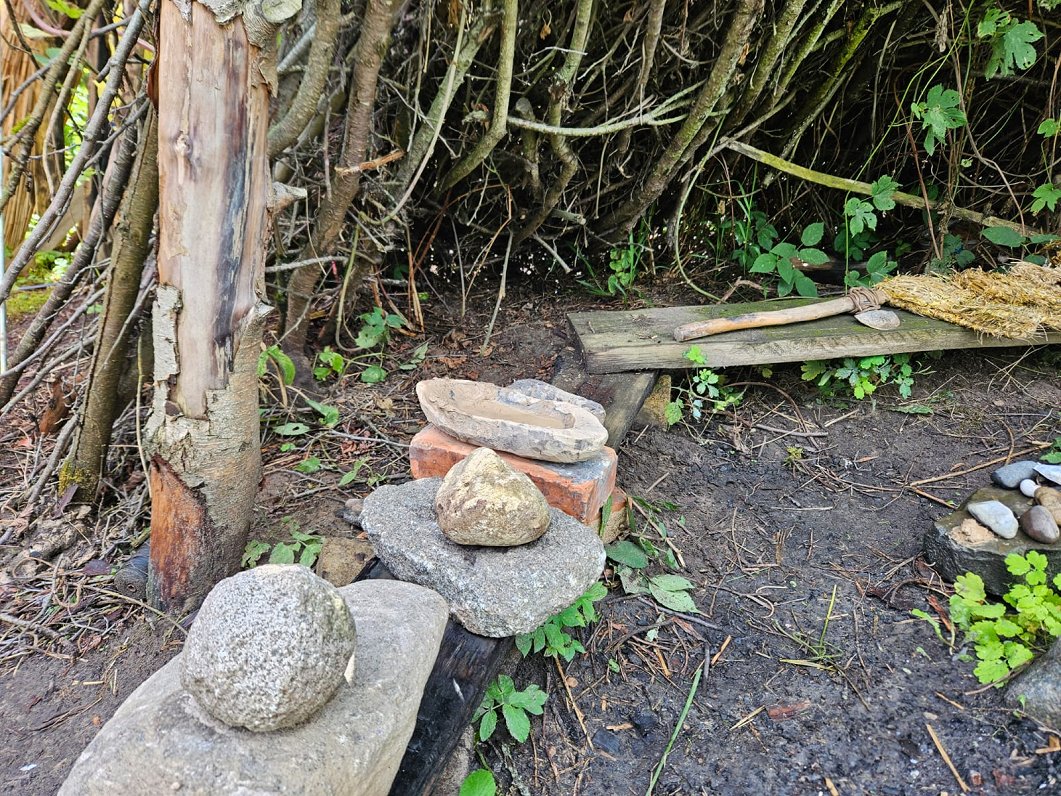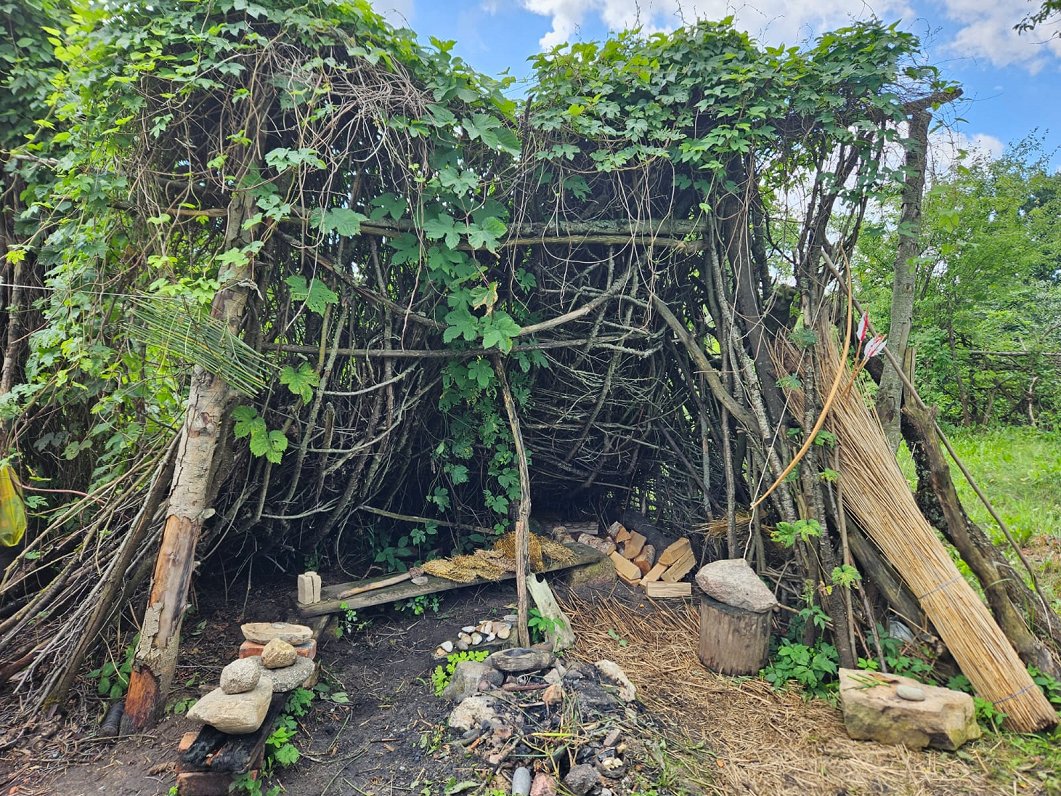Experimental archeology is present in Latvia, and a summer school has been held on Lucavsala island in Rīga in July.

Since 2015, the territory of a small garden on Lucavsala has been managed by the Latvian Archaeological Club, which established an experimental archeology park here. Every summer, the Summer School of Archeology is held here, where anyone interested is invited to participate in the creation or testing of objects from various historical eras. Each corner of the garden is dedicated to a different era.
"As in a proper archaeo-park, the thematic division of eras is observed. When we enter the garden, we have the Stone Age as a beginning. Following on we have early metals, the Bronze Age as a continuation, and at the very end we are currently developing the theme of the Iron Age and the early Middle Ages," says archaeologist Artūrs Tomsons.
In the archaeological park, everyone can, for example, try to make and sharpen their own flint blade. Dwelling houses are built here, ax and knife blades are cast in bronze, dishes and clothes are made, and lectures are given. But on the day of Latvian Television's visit, the main focus is on the ancient ranged weapons, specifically the slingshot, ancient remains of which have been found in Rīga, though they are more commonly associated with southern Europe and the Meriterranean region, particularly the Balearic islands.
In order not to accidentally injure anyone, a tomato is used instead of the stone preferred by the Roman legions in the practical demonstration of slingshot firepower by researcher Reinis Indāns.

Some historians call it non-academic role playing. However, Tomsons points out that such experiments allow a better understanding of the materials found in the excavations.
For example, clay balls found on Klangi Hill, which until now were considered to be cult objects, could actually be linga ammunition.
"There's even a joke in our business – if something can't be explained, then we class it as a cult item until we find a more practical explanation," says Tomsons.
The club has many more plans to develop this area and organize experiments and excursions for students to promote interest in history. However, for the time being, this is hindered by uncertainty about the future as well as the past, because Riga City Council plans ambitious construction works in the nearby territory of Lucavsala gardens.


























